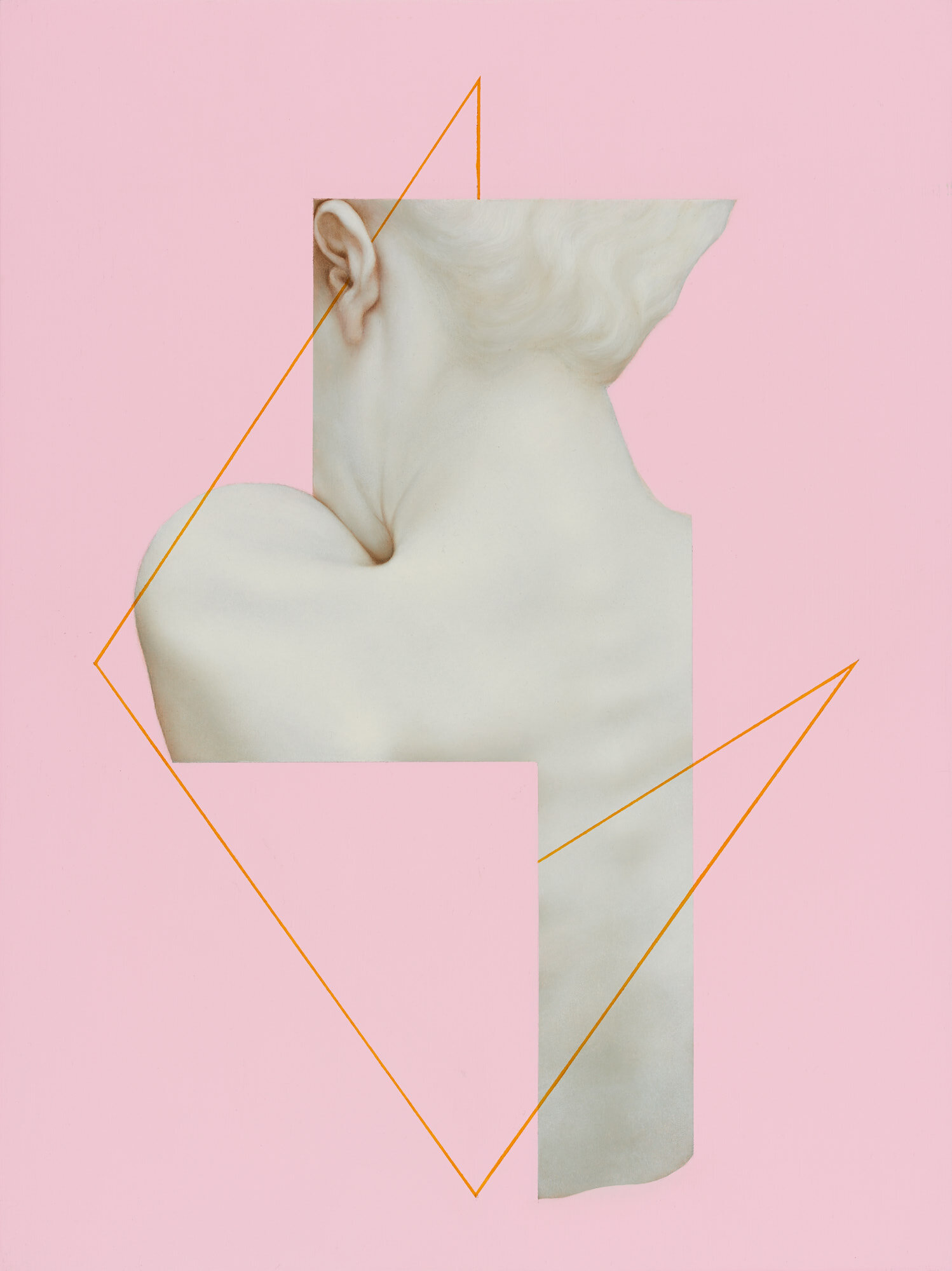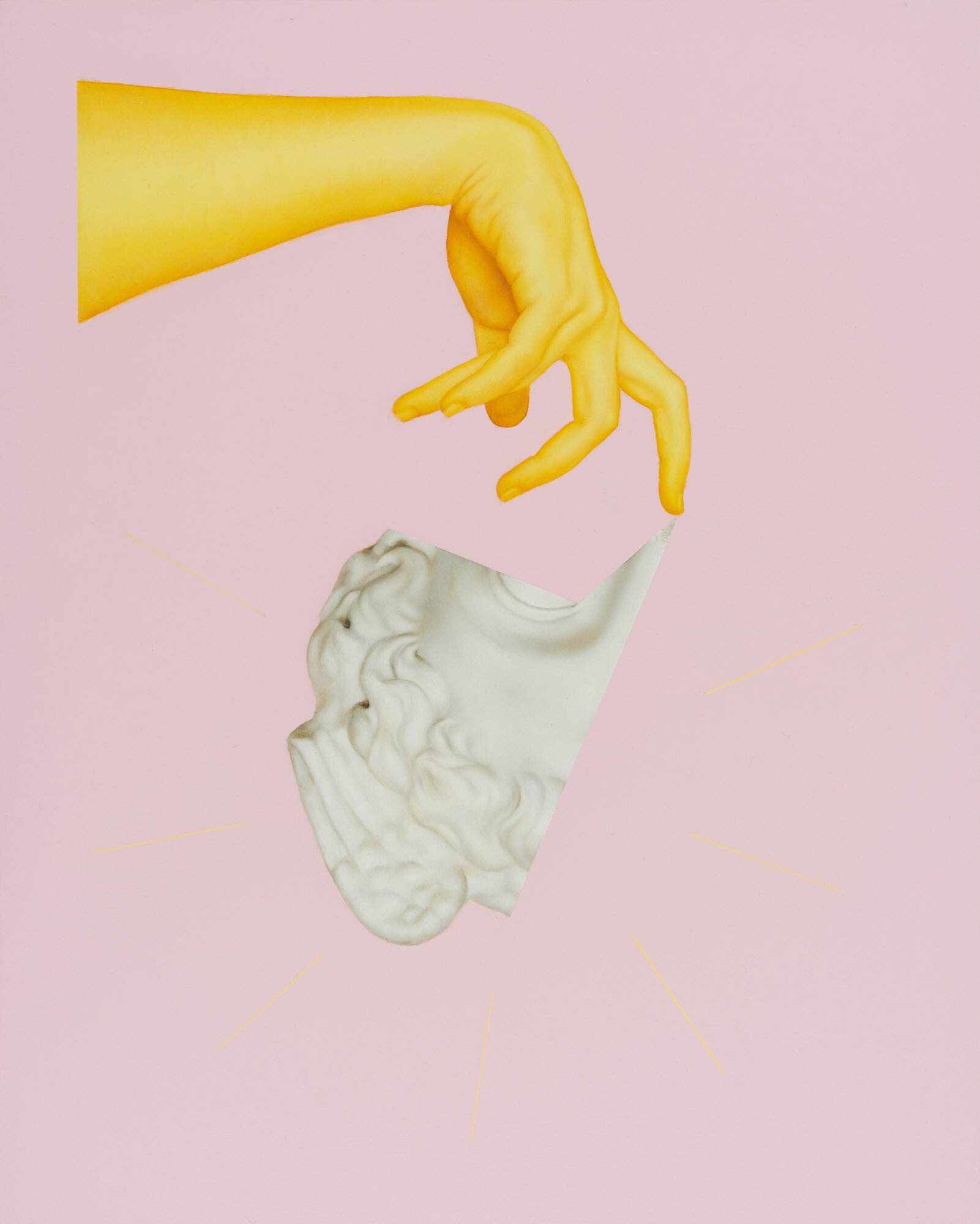X-bar theory and NONSEQUITUR
The X-bar theory / XP -> (SPEC) X̅ YP* and NONSEQUITUR
I explore in this series how we can break down the human form into modular fragments of meaning that allow for ever-variable ‘sentences’ of visual language. The X-bar theory (Chomsky, 1970) offers a schema of syntax that all languages abide by. Like language, compositions use elements that possess innate meaning, like the human form. If visual composition is treated like language (as a ‘discrete combinatorial system’*) there is a point to which one can fragment an image where meaning is retained in a concentrated form - such as a hand or a head. The fragments, like words, can be reassembled in infinite variations to produce legible meaning, playing on both the viewers’ associations and the homonymic nature of the fragments.
The modular triptych, XP -> (SPEC) X̅ YP* (X-bar theory), gives a set of visual elements, each possessing internal meaning, that tell a more complex narrative together. The piece is designed to be rearranged (both in the orientation of the canvases and in the order/direction they are hung) to enable different meanings of that narrative.
What the triptych does is a blueprint for the NONSEQUITUR body of work as a whole. It is an exercise in visual verse: the series of eight pieces (nine panels, two of which form a diptych) is created as a whole, though the pieces, apart from the diptych, can be divided or separated out. Each piece can be joined with one or more others in a variety of orientations/ distances. The titles are drawn from literary theory terminology.
This body of work is my attempt to systematically distill the modularity of meaning in visual language that I believe is innate to our reading of visual art.
*A discrete combinatorial system uses a finite number of discrete elements to generate an infinite number of combinations.










